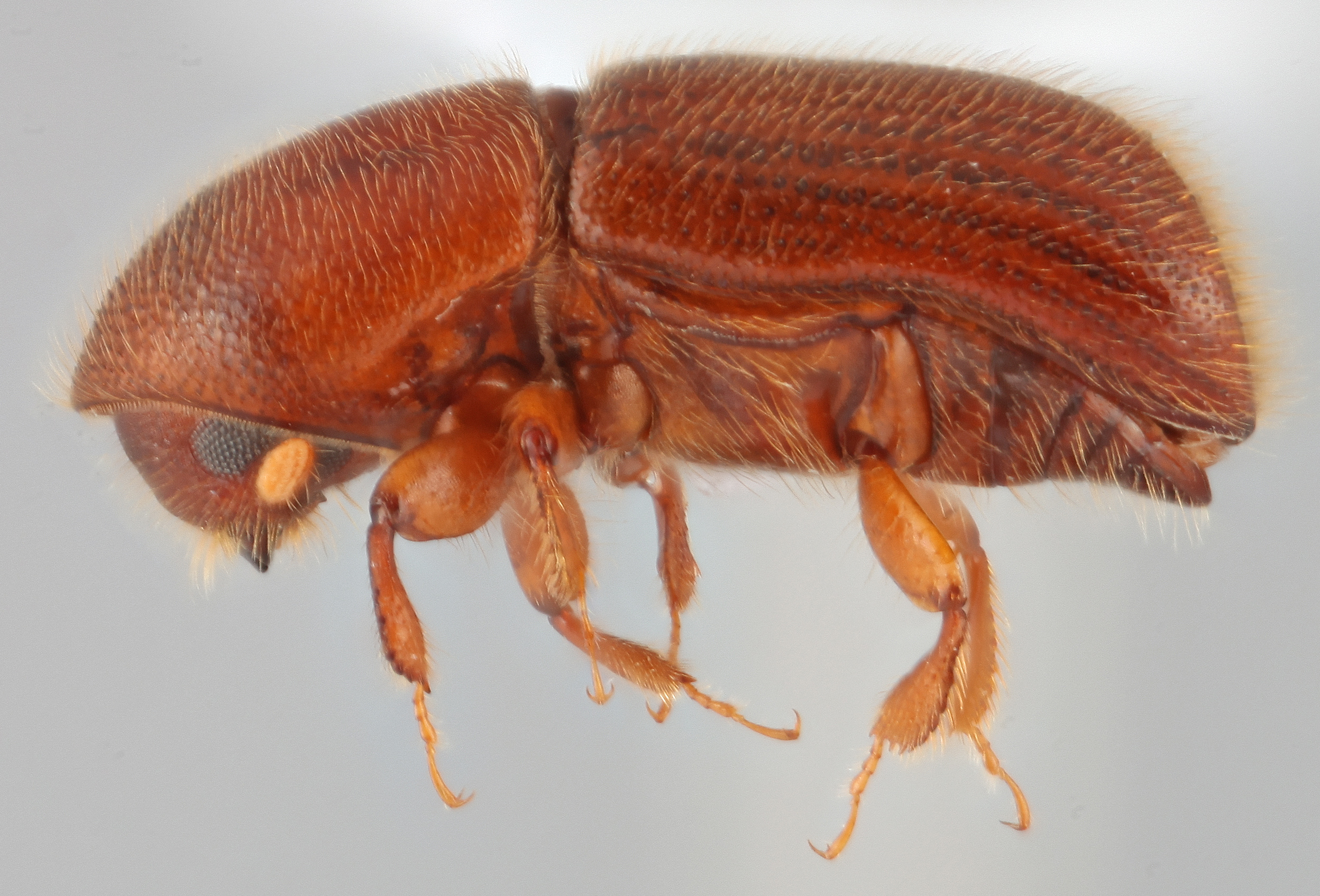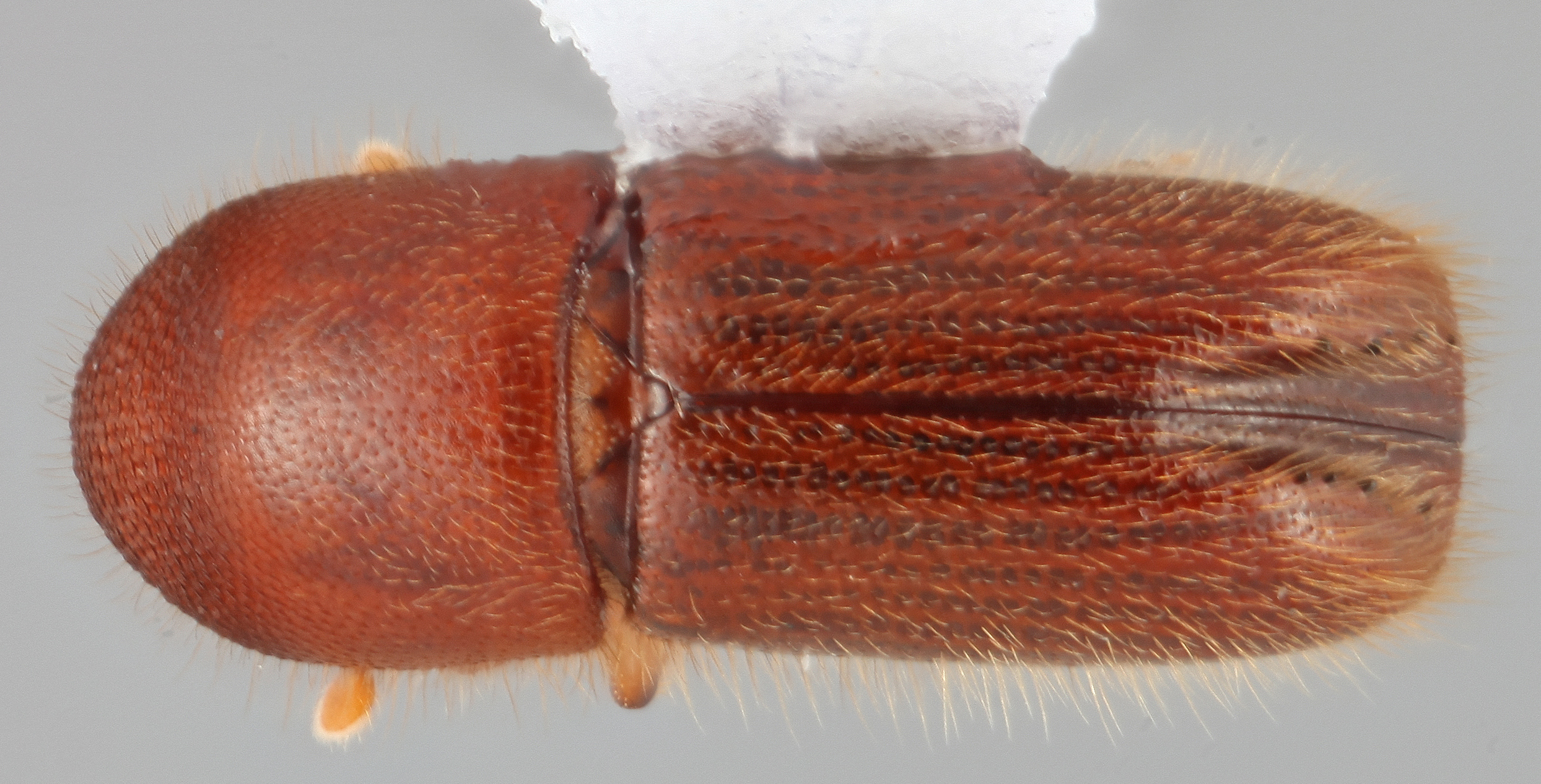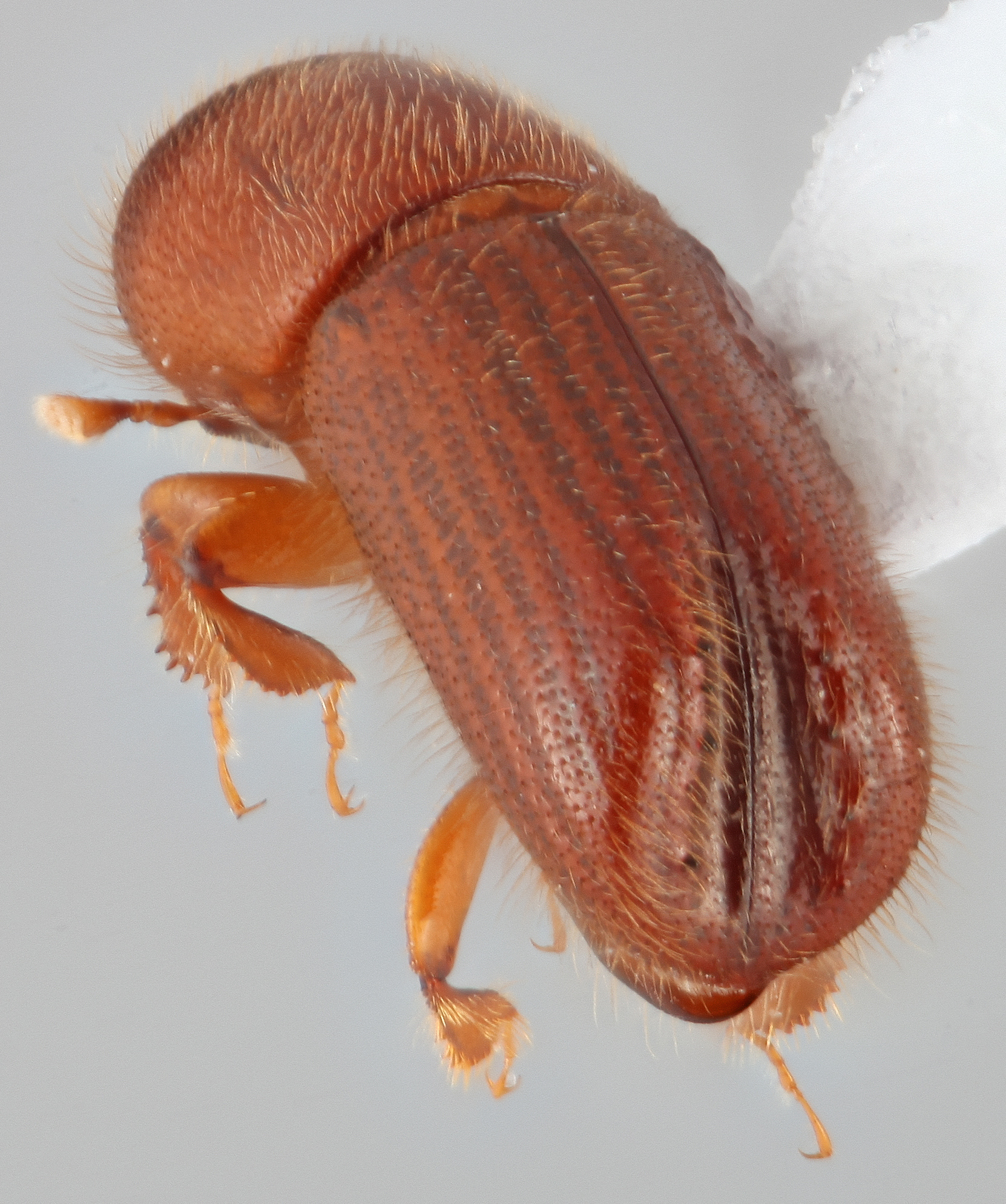Cyclorhipidion laetum
|
Cyclorhipidion laetum lateral; S.M. Smith |
|
Cyclorhipidion laetum dorsal; S.M. Smith |
|
Cyclorhipidion laetum declivity; S.M. Smith |
|
Cyclorhipidion laetum frontal; S.M. Smith
|
Taxonomic history
Xyleborus laetus Niisima, 1909: 159.
Cyclorhipidion laetum (Niisima, 1909): Smith et al. 2018b: 394.
Diagnosis
2.86−3.11 mm long, 2.9 times as long as wide. This species is distinguished by its moderate size; declivity obliquely truncateobliquely truncate:
nearly truncate but rounded not flat in lateral view
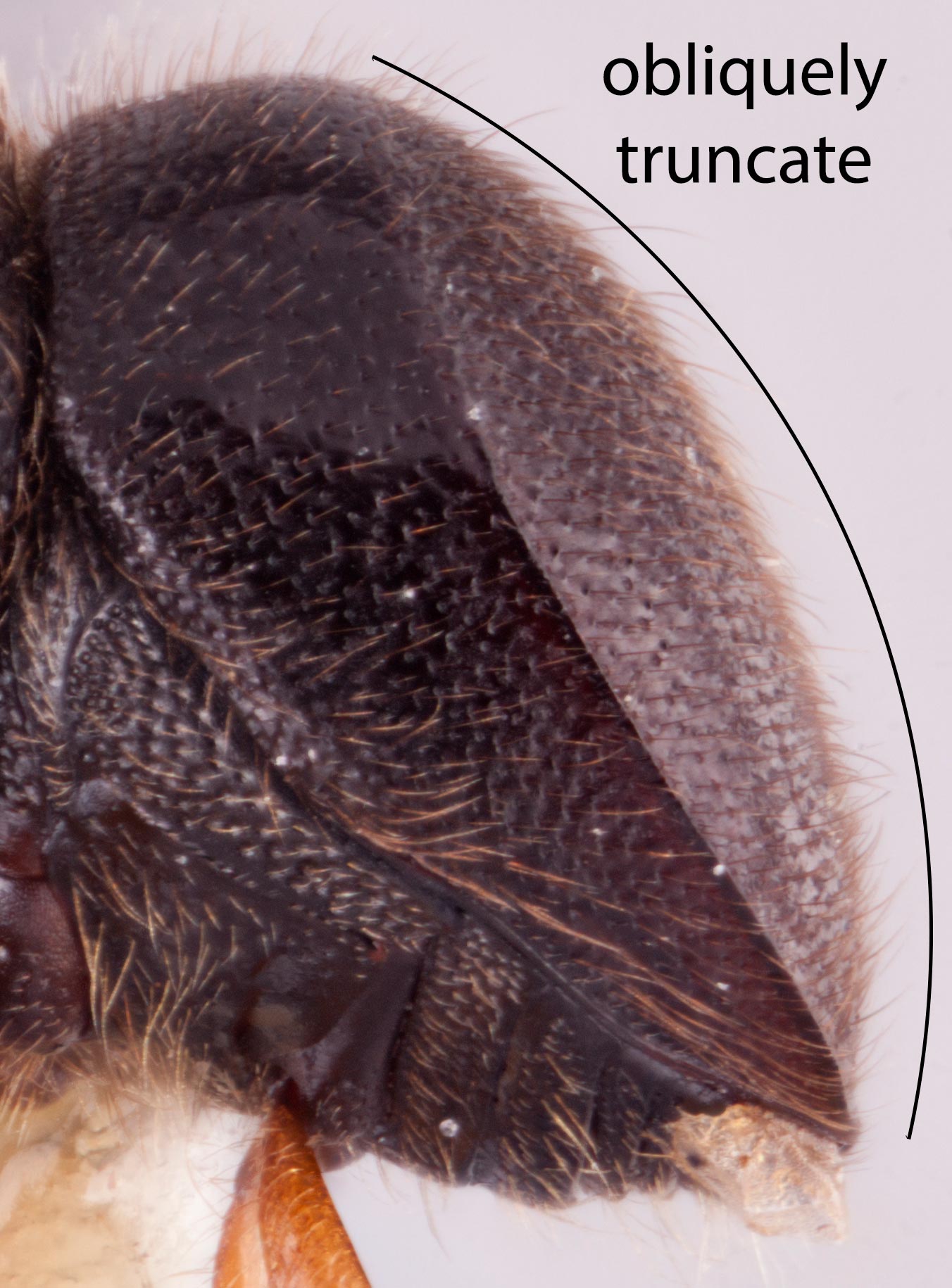 , moderately to strongly sulcatesulcate:
, moderately to strongly sulcatesulcate:
deeply furrowed or grooved
; pronotum elongate from dorsaldorsal:
of or relating to the upper surface; opposite of ventral
 view (type 9); declivitydeclivity:
view (type 9); declivitydeclivity:
downward slope of either the pronotum or elytra
 laterally sulcatesulcate:
laterally sulcatesulcate:
deeply furrowed or grooved
to interstriaeinterstria:
longitudinal spaces along the elytra between the striae, which is not as<br />
impressed and bear smaller punctures.
 3; first and second striaestria:
3; first and second striaestria:
punctures in rows, which may or may not be impressed to make grooves punctures confusedconfused:
punctures confusedconfused:
of markings, having indefinite outlines or running together as lines or spots without definite pattern; usually referring to punctures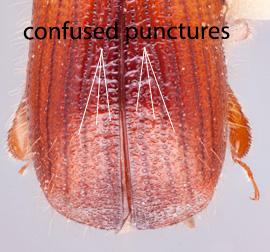 with interstrial punctures; first interstriaeinterstria:
with interstrial punctures; first interstriaeinterstria:
longitudinal spaces along the elytra between the striae, which is not as<br />
impressed and bear smaller punctures.
 narrow, the second rather wide, dilated in middle, irregularly punctatepunctate:
narrow, the second rather wide, dilated in middle, irregularly punctatepunctate:
set with fine impressed points, appearing as pin pricks
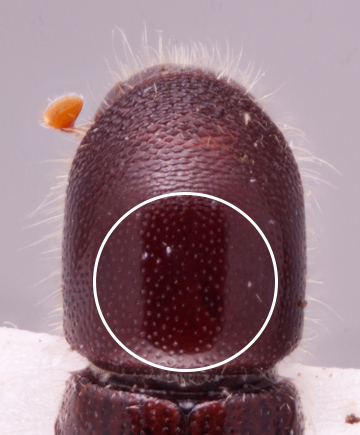 , the third with somewhat large two or three conical tuberclestubercle:
, the third with somewhat large two or three conical tuberclestubercle:
a small knob-like or rounded protuberance of the exoskeleton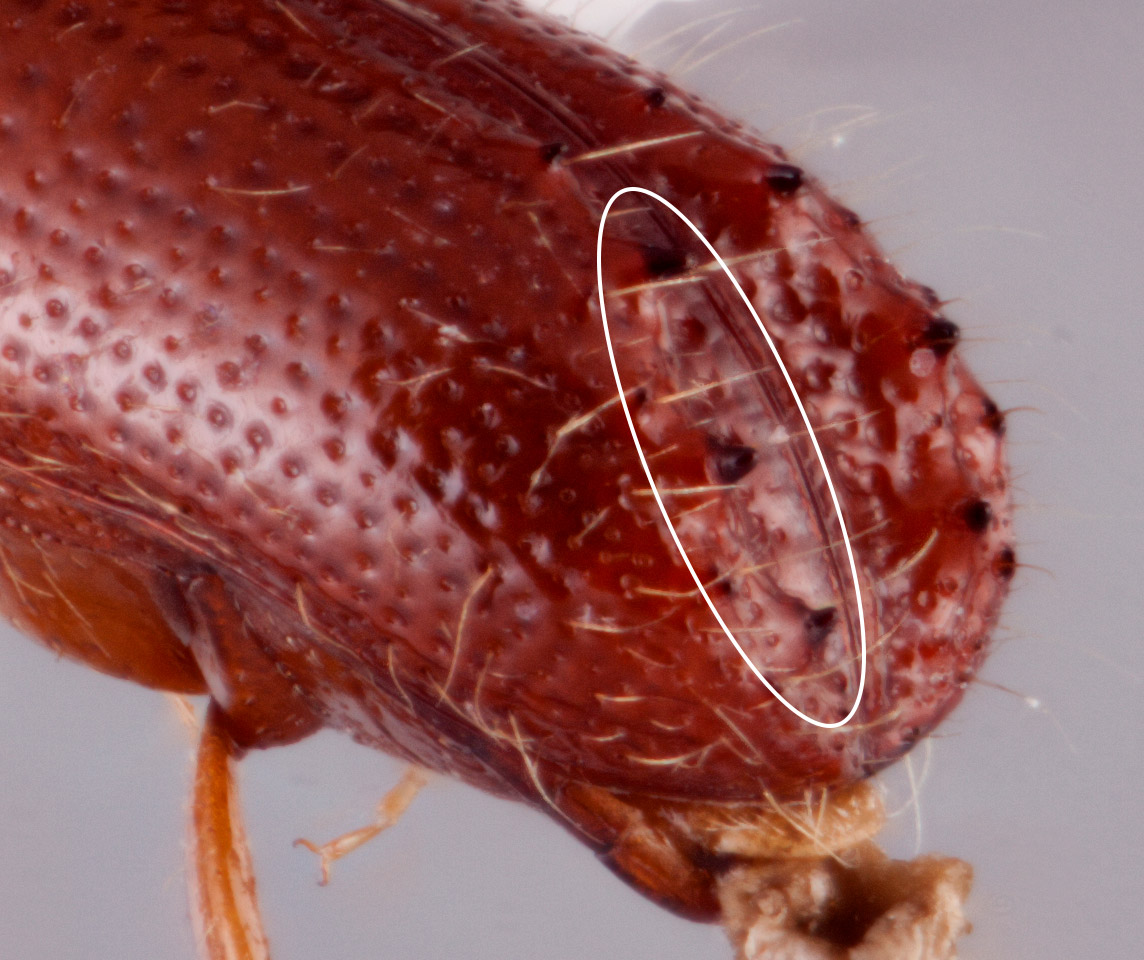 .
.
May be confused with
Cyclorhipidion japonicum, C. neocavipenne
Distribution
Japan, KoreaHost plants
recorded from Quercus mongolica var. grosseserrata and Castanea crenata (Fagaceae) and Prunus apetala var. pilosa (Rosaceae) (Nobuchi 1981aNobuchi 1981a:
Nobuchi A. 1981a. Studies on Scolytidae (Coleoptera) XXII. Six new species and two new females of the genus Xyleborus from Japan. Kontyucirc; 49: 143-154.)
DNA data
Sequences available for CAD.
CAD: OM891112

